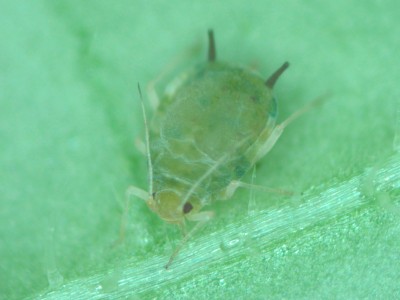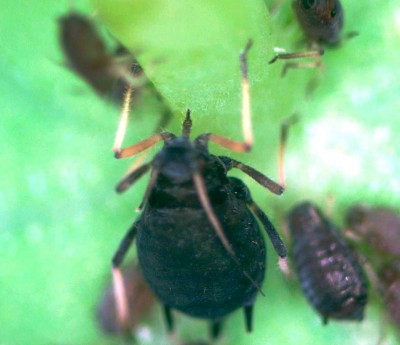By: Joan Allen, UConn Department of Plant Science and Landscape Architecture, 2015

Aphids are tiny, soft-bodies insects with pear-shaped bodies. They have long legs and a pair of tube-like cornicles on the back of their abdomen. They have incomplete metamorphosis which means the newly hatched young gradually molt through several nymph stages until they become adults. Aphids are plant feeders and they suck plant juices through straw-like mouth parts. There are many species of aphid and some are important plant pests. When present in large numbers they cause plants to yellow, produce stunted or deformed new growth, or even die. In addition, aphids vector some plant viruses. Some aphids produce white waxy filaments that cover their body and give them a cottony appearance. Aphids excrete a liquid high in sugars called honeydew that drips onto leaves and other surfaces. Black fungi called sooty molds grow on the honeydew. Some ants like to eat the honeydew and will even protect the aphids from predators to preserve their food supply. These tiny insects often go unnoticed in low numbers but they have fascinating life cycles. Many aphids live on a wood plant in winter and migrate to an herbaceous ornamental or vegetable plant for the summer. Some are happy to feed on a variety of plants while others are quite fussy and will only feed and reproduce on one. Aphids grow and multiply rapidly, with the time from hatch to reproducing adult as short as one week under favorable conditions. Check out the links for more info and images.
– Aphid information great for all ages.
– Aphids and ants: a fascinating relationship!
– Aphid life cycles and habits.
